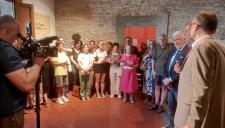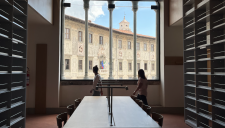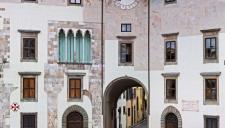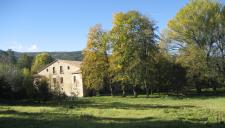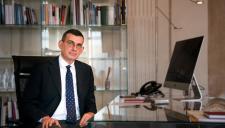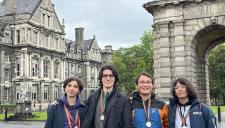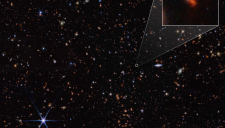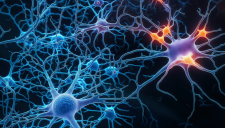From June, the NEST Laboratory will be operating its own research point in the Sala dei Bronzetti for the analysis of the collections of bronzes and medals. The scientific personnel will also be in action during the Museum's opening times, to offer a window on the most advanced science and technology that will also be open to the museum's visitors.
Pisa, 31 May 2021.
An antenna on the world of nanoscience and nanotechnology inside the National Museum of the Bargello, due to make its appearance in June thanks to an agreement between the museum complex of Florence and the Scuola Normale Superiore. The National Enterprise for nanoScience and nanoTechnology (NEST) Laboratory of the Normale, an international centre where physicists, chemists and biologists investigate matter on a nanometric scale, situated in Pisa, will be setting up its own research point in the Sala dei Bronzetti of the antique Palazzo del Podestà in Florence.
In the NEST space at the Bargello, a team of specially selected young scholars, together with research personnel from the Laboratory, will be using their scientific skills to analyse the materials hosted by the Museum, which boasts extremely important collections of Italian bronzes of the Renaissance and of the Baroque period and of Italian and foreign medals.
Nanotechnology will enable the researchers to analyse the artefacts with a degree of precision unknown to other methods of investigation. Hence the NEST researchers will be able to identify with exactitude the structure of their materials, the type of alloy used in their making, their surface finishings and internal structures: a mass of data to be integrated in tridimensional hyperspectral maps. Added to the store of physical data will be the historical-artistic data of the scholars of the Scuola Normale and the Bargello. The ambitious aim is to create an investigative tool accessible to all scholars, to propose a multidisciplinary analysis model applicable at other museums and archaeological sites.
Lo spazio di ricerca del NEST verrà appositamente delimitato e sarà riconoscibile all’interno della Sala dei Bronzetti, al terzo piano del Palazzo del Podestà, e il personale scientifico sarà all’opera con le proprie attività di ricerca e di analisi anche durante l’apertura del Museo: una vetrina sulla scienza e la tecnologia più avanzata di cui potranno fruire anche i visitatori.
The NEST research space will be clearly marked out and will be recognisable inside the Sala dei Bronzetti, on the third floor of the Palazzo del Podestà; the scientific personnel will also be carrying out their research and analysis activities during the Museum's opening times: a window on the most advanced science and technology that will also be open to the museum's visitors.
The collaboration between the Scuola Normale and the National Museum of the Bargello falls within the programme of intervention of the Region of Tuscany denominated “Museum collections and historical archives of Tuscany: analysis of materials, advanced digitalisation, and multimedial dissemination” -“Collezioni museali e archivi storici toscani: analisi dei materiali, digitalizzazione avanzata, disseminazione multimediale” (CoMAST), which envisages the funding of cultural research grants for specific scientific projects.
The authorities for putting the Agreement in place are, for the Scuola Normale, Prof. Fabio Beltram, director of the NEST Laboratory, and Prof. Francesco Caglioti, director of the CoMast programme, and for the Museum, Dr. Paola D’Agostino, director of the Museums of the Bargello, and Dr. Ilaria Ciseri, the official in charge of the National Museum of the Bargello.
The grants for the young researchers engaged in the CoMast programme are funded by the Scuola Normale and by the Region of Tuscany, with a contribution from the Fondazione Il Bargello (Florence) and from the international committee of the “Friends of the Bargello”.



